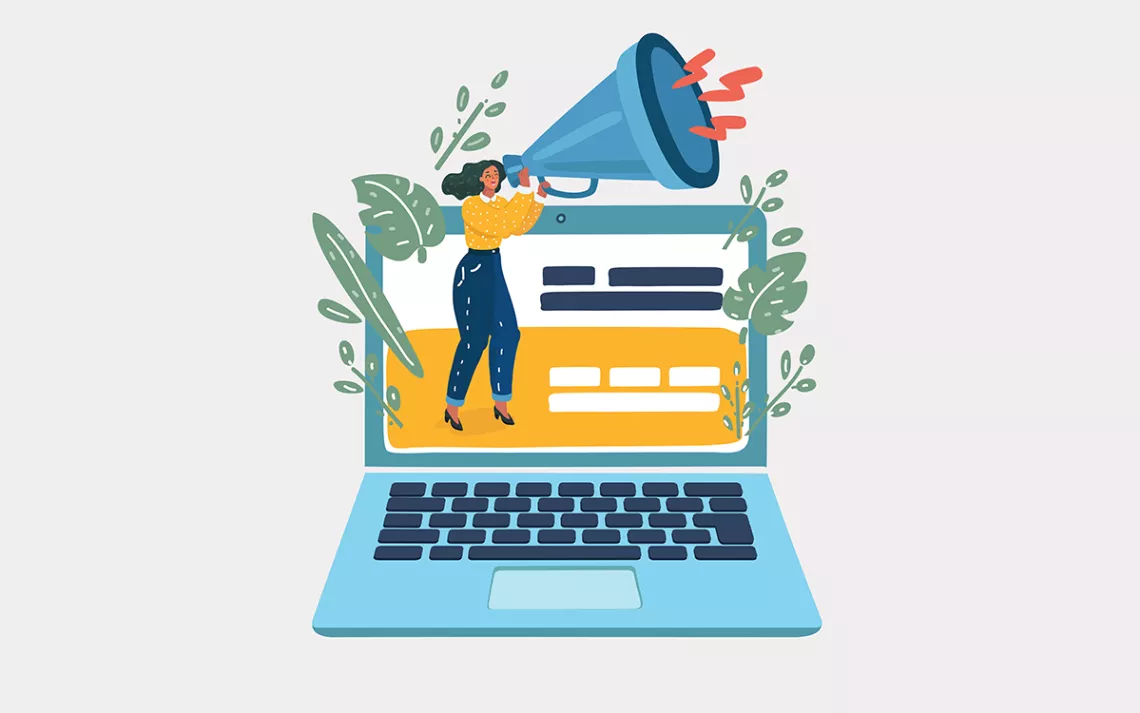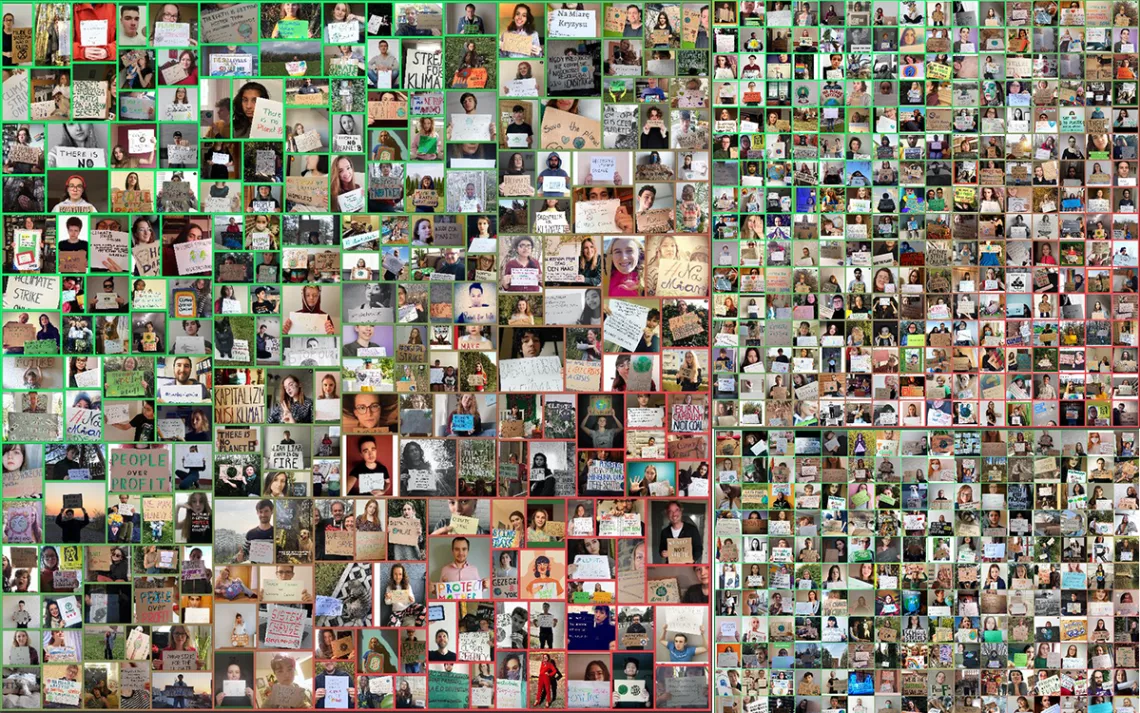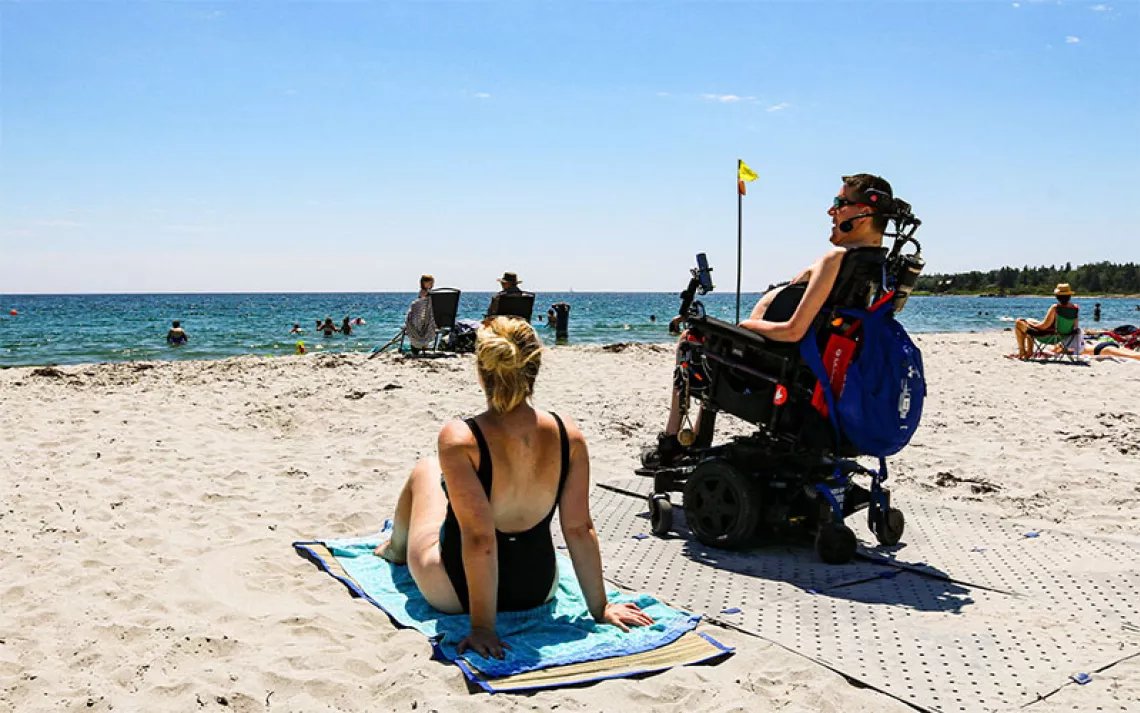Earth Day Live Is Coming to a Screen Near You
Stuck inside, youth climate activists mobilize digitally for 50th anniversary

Photo by cosmaa/iStock
From New York to Nairobi, across every continent, the 50th anniversary of Earth Day was gearing up to be big. A broad coalition of environmental organizations had set an ambitious goal of mobilizing 1 billion people to take part.
For youth activists, the day was set to be the next milestone in the swelling movement that was catalyzed by Greta Thunberg’s solitary strikes outside the Swedish Parliament in 2018. The first global youth climate strike on March 15, 2019, drew 1.4 million students to the streets, and turnout more than doubled for the next one on September 20, 2019. Angered by images circulating on social media of fires burning in the Amazon and the Congo Rainforest, and across the continent of Australia, students had joined youth-driven climate activist groups like Zero Hour and Fridays For Future by the thousands.
“People were really seeing [Earth Day] as a critical turning point for the movement,” explains Naina Agrawal-Hardin, a 17-year-old organizer with the Sunrise Movement. “There was a general sense that we needed to get millions of people into the streets, and wherever we could, to get those people to rallies, but also sitting-in at congresspeople’s offices or blocking intersections. We needed to level up.”
By February, after hundreds of hours of phone calls and group chats, plans for Earth Day 2020 were taking shape: Cloth petitions would stretch down the avenues of big cities, long and wide enough to be seen from the sky, filling up with signatures over the course of the day; protesters would lock themselves together in front of the branches of fossil-fuel-funding banks around the country; and students would storm the offices of local officials, demanding their public school systems transition to 100 percent renewable energy. Boats would stop traffic.
Then the pandemic hit. As COVID-19 spread around the globe, schools and businesses began to close their doors and shift to online. In March, organizers realized that Earth Day would have to go virtual too.
“It was hard,” Agrawal-Hardin says, “but it was also so clear that it was what needed to happen.” Agrawal-Hardin represents Sunrise Movement in the Youth Climate Strike Coalition, a group of 10 youth climate organizations that also includes Zero Hour, Extinction Rebellion, and Fridays for the Future. The coalition never pressed pause, she says. “It’s not like we were going to pack up our bags just because Earth Day isn’t what we wanted it to be.”
Within days of coming to terms with the new reality, activists came up with plan B: a three-day online experience called Earth Day Live, which will stream on Vimeo and be syndicated across popular social media platforms like TikTok and Twitch. On the first day, April 22, groups around the country will host virtual climate strikes and local live streams in an effort to draw in new members who live nearby. Topics might include, for example, incidents of environmental racism in a particular neighborhood or efforts to shut down a carcinogen-emitting factory in a predominantly black community.

Weekly climate strikes have moved from streets to screens as students across the world shelter in place. | Courtesy of Fridays For Future Digital
On day two, the focus will be on divesting from fossil fuels. Participants will be encouraged to ask friends and family to switch from banks that fund fossil fuel infrastructure, or to cancel insurance policies with companies that insure it. Activists will take particular aim at Chase Bank, Blackrock, and Liberty Mutual through Twitter storms, videos of themselves cutting up credit cards, and mass letter writing campaigns.
The last day, Friday, is dedicated to voter registration. Young people will launch a voter registration campaign with the goal of signing up 50,000 new climate-concerned voters. Those who tune in will be asked to commit to “vote tripling,” or getting three nonvoters or first-time voters to register and pledge to show up at the polls. Each day, as if attending a festival, participants can opt in for concerts, teach-ins, dance parties, and meditation sessions.
Putting together a virtual three-day event on short notice is not easy, but most youth climate activists, many of whom spent 2019 organizing international climate strikes, are already well versed in online activism. Like others, Agrawal-Hardin knew how to navigate digital organizing tools like Zoom and Slack long before those platforms became the staple that they are now, amid the current crisis. And, it turns out that no longer having to physically report to school has freed up hours of time to do more online organizing.
Inevitably, the virtual gatherings will not deliver the same physical sensation that in-person protests provide, but the potential for relationship-building—which is at the heart of power-building—is no less possible with the tools currently available to us, says 77-year-old Harvard University professor Marshall Ganz. In 1964, Ganz put school on hold to join young activists in a massive effort to register black voters in Mississippi. “Usually, nobody has time for anything. Guess what? Things have flipped,” he says. “This is a historic moment that affords an opportunity for much more connected and diverse organizing.” And it need not be any less invigorating, he says.
Yolian Ogbu, a 20-year-old student at North Texas University in Denton, Texas, can attest to that. Back before “social distancing” was commonplace, Ogbu never would have guessed that she’d have the chance to sit down in her living room with Angela Davis and Naomi Klein, two well-known scholars and activists. But on a Thursday evening in March, Ogbu joined more than 10,000 others across the world for a workshop on how to use the time stuck at home to build a stronger, more intersectional progressive movement.
“I was freaking out,” Ogbu says, reflecting on what it was like to listen to raw thoughts from Davis and Klein, delivered from the intimacy of each of their homes. The feeling of being star-struck was just as real, she explains, and maybe even greater, than if she had seen them in a packed auditorium. Organizers are hoping to create that same effect during Earth Day Live, aided by a handful of celebrity appearances from musicians such as Talib Kweli and Angélique Kidjo, and actors like Joaquin Phoenix and Patricia Arquette.
Digital organizing has its shortcomings, Ganz points out. Activists can find it hard to break out of their existing social circles. And the shift has brought other unforeseeable challenges, like “Zoom-bombing”—when uninvited intruders crash a meeting. On a 50-person Zoom call in March, according to one 17-year-old organizer, the number of attendees suddenly jumped to 80 and anonymous voices began shouting violent and vulgar slurs. It was the second time it had happened that day.
As unsettling as the intrusions have been, says Dillon Bernard of the Future Coalition, troubleshooting how to make online meetings more secure will ensure safer spaces beyond Earth Day. “This is a time to create the digital infrastructure that can supercharge the future of our movement,” he says. It’s also a time to talk about how the coronavirus and the climate crises are connected, Agrawal-Hardin says, and get a real-time look at what caliber of emergency response and solidarity is possible at a societal level. “I think there’s a new unity and strength coming from this challenge.”
When the sun rises on April 22, Agrawal-Hardin will be in Michigan, Bernard in New Jersey, Ogbu in Texas. Rather than hopping on a bus to meet up with friends and head to rallies and marches, they’ll be looking at the same computer screens that they’ve been staring into since they began social distancing weeks ago. City squares and municipal buildings will remain empty and silent. While Earth Day might not be an opportunity for the scaled-up mobilization that youth activists had originally envisioned, many are already thinking ahead to when in-person protest becomes safe again. “Let’s plan to get people riled up and really questioning our system and our country right now,” Ogbu says. “And after, when this virus is over, the streets will be full.”
 The Magazine of The Sierra Club
The Magazine of The Sierra Club



